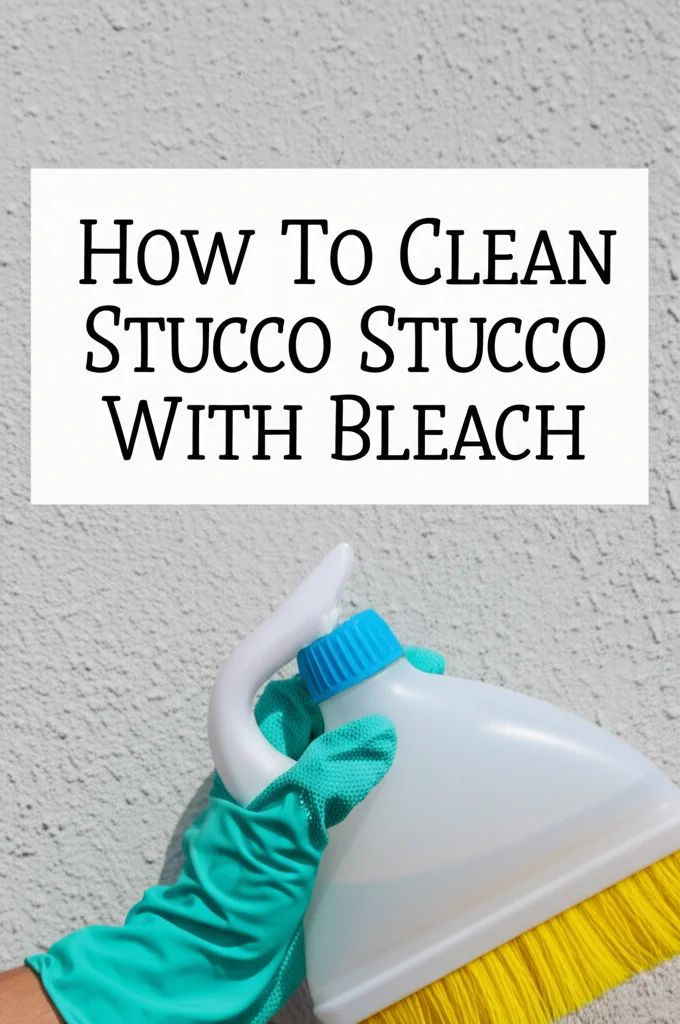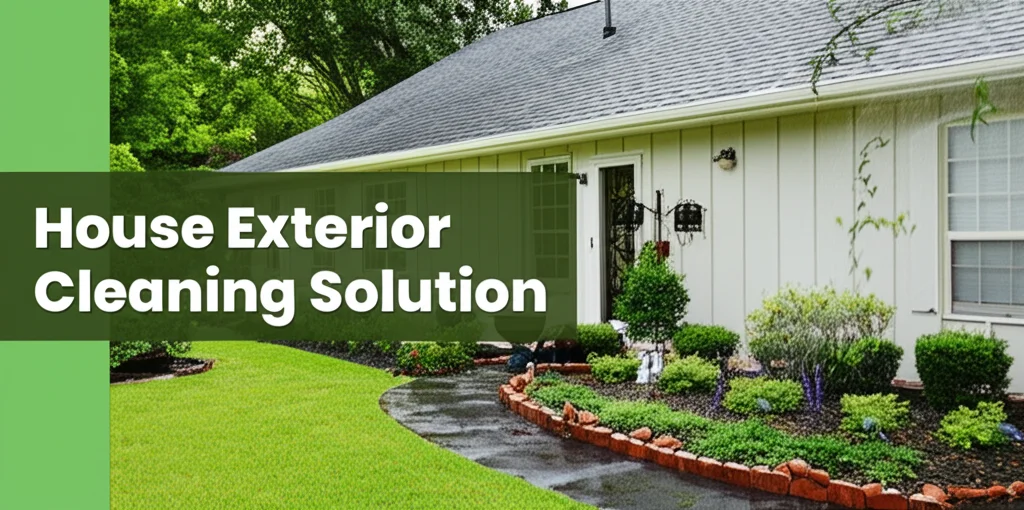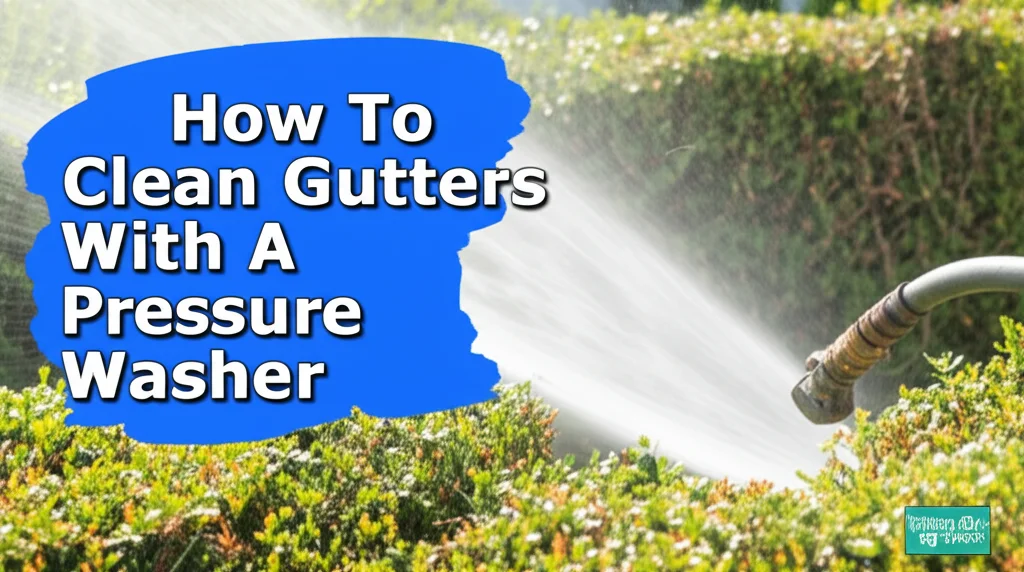· Home Improvement · 7 min read
How To Clean Stucco With Pressure Washer

Revitalize Your Home: How To Clean Stucco With a Pressure Washer
Is your stucco looking dull, grimy, or covered in algae? You’re not alone! Many homeowners struggle with maintaining the appearance of their stucco exteriors. Fortunately, a pressure washer can be a powerful tool for restoring your stucco to its former glory. This article will guide you through the process of how to clean stucco with a pressure washer, ensuring a safe and effective cleaning experience. We’ll cover everything from preparation to technique, and even potential pitfalls to avoid. Keeping your stucco clean not only boosts curb appeal but also helps prevent long-term damage.
Can you pressure wash stucco?
Yes, you can pressure wash stucco, but it requires careful technique. Using the wrong pressure or nozzle can damage the stucco, so it’s crucial to follow the guidelines outlined in this article. Proper preparation and a gentle approach are key to a successful stucco cleaning.
Why Pressure Washing Stucco Needs a Delicate Touch
Stucco, while durable, is a relatively soft material. Unlike brick or concrete, it can be easily damaged by high-pressure water. Think of it like a sponge – too much force and you’ll break it down. That’s why understanding the nuances of pressure washing stucco is so important. Incorrect techniques can lead to etching, pitting, or even complete removal of the stucco finish. This not only looks bad but can also compromise the structural integrity of your home, leading to costly repairs. We’ll focus on methods that prioritize safety and effectiveness.
Gathering Your Supplies for Stucco Cleaning
Before you start, having the right tools and supplies will make the job much easier and safer. Here’s a checklist of what you’ll need:
- Pressure Washer: A gas or electric pressure washer will work, but aim for a model with adjustable pressure settings.
- Stucco Nozzle: A wide-angle nozzle (40-degree or 25-degree) is essential. Avoid using narrow, high-pressure nozzles.
- Detergent (Optional): A stucco-specific cleaning detergent can help loosen dirt and grime. Always check the detergent’s compatibility with your stucco type.
- Pump Sprayer or Garden Sprayer: For applying detergent.
- Protective Gear: Safety glasses, gloves, and closed-toe shoes are a must.
- Drop Cloths/Plastic Sheeting: To protect plants, windows, and other sensitive areas.
- Painter’s Tape: To mask off areas you don’t want to get wet.
- Soft-Bristled Brush: For scrubbing stubborn stains.
- Ladder (if needed): Ensure it’s stable and properly positioned.
Preparing Your Stucco for a Pressure Wash
Preparation is just as important as the washing itself. Taking the time to properly prepare your stucco will minimize the risk of damage and maximize cleaning results. Here’s what you need to do:
- Protect Surroundings: Cover plants, windows, doors, and light fixtures with drop cloths or plastic sheeting. Use painter’s tape to secure the coverings.
- Remove Obstacles: Move any furniture, grills, or other items away from the stucco walls.
- Pre-Wet the Stucco: Lightly wet the stucco with a garden hose. This helps to loosen dirt and prevents the detergent from drying too quickly.
- Apply Detergent (Optional): If using a detergent, follow the manufacturer’s instructions for dilution and application. Apply evenly using a pump sprayer or garden sprayer. Let it dwell for the recommended time (usually 5-10 minutes), but don’t let it dry. If you’re unsure about using a detergent, test it on an inconspicuous area first.
- Inspect for Damage: Before you begin pressure washing, carefully inspect the stucco for any cracks or loose areas. Address these issues before cleaning to prevent further damage.
The Right Pressure Washing Technique for Stucco
Now for the main event! Here’s how to pressure wash stucco safely and effectively:
- Start with Low Pressure: Begin with the lowest pressure setting on your pressure washer. You can always increase the pressure gradually if needed.
- Maintain Distance: Keep the nozzle at least 12-18 inches away from the stucco surface. Closer proximity increases the risk of damage.
- Use a Wide-Angle Nozzle: A 40-degree or 25-degree nozzle is ideal for stucco. These nozzles distribute the water pressure over a wider area, reducing the risk of etching.
- Spray in a Consistent Motion: Use a sweeping, side-to-side motion, overlapping each pass slightly. Avoid holding the nozzle in one spot for too long.
- Work from Top to Bottom: This allows the dirty water to run down the wall, preventing streaks.
- Rinse Thoroughly: After washing, rinse the stucco thoroughly with clean water to remove any remaining detergent or dirt.
- Stubborn Stains: For stubborn stains, use a soft-bristled brush and gentle pressure to scrub the area before rinsing. You might also consider a specialized stucco cleaner for these tough spots. If you’re dealing with mold or mildew, a solution of water and bleach (1 part bleach to 3 parts water) can be effective, but test it in an inconspicuous area first. Always wear appropriate protective gear when working with bleach.
If you’re unsure about any step, it’s always best to consult a professional pressure washing service. They have the experience and equipment to clean your stucco safely and effectively. You can find more information about professional cleaning services here.
Dealing with Common Stucco Problems During Cleaning
Sometimes, you’ll encounter specific issues while cleaning your stucco. Here’s how to address them:
- Algae and Mold: These often appear as green or black stains. Use a stucco-specific cleaner or a mild bleach solution (as mentioned above) to remove them.
- Efflorescence: This is a white, powdery substance that appears on the surface of stucco. It’s caused by salt deposits. A specialized efflorescence remover is the best solution.
- Cracked Stucco: Avoid directing high-pressure water at cracked areas. This can worsen the damage. Repair the cracks before cleaning.
- Loose Stucco: Similarly, avoid spraying loose stucco. It may come off completely. Have a professional assess and repair the damaged areas.
Final Steps and Preventing Future Dirt Build-Up
Once you’ve finished pressure washing, remove all protective coverings and rinse any remaining debris from the surrounding areas. Allow the stucco to dry completely. To help prevent future dirt build-up, consider these tips:
- Trim Vegetation: Keep shrubs and trees trimmed away from the stucco walls to reduce moisture and shade.
- Regular Inspections: Inspect your stucco regularly for cracks or damage and address them promptly.
- Annual Cleaning: A gentle pressure washing once a year can help maintain the appearance of your stucco and prevent the build-up of dirt and grime.
- Consider a Protective Coating: Applying a water-repellent sealant can help protect your stucco from moisture and staining.
Frequently Asked Questions About Cleaning Stucco
- What pressure should I use for stucco? Start with the lowest setting and gradually increase it, never exceeding 500-600 PSI.
- Can I use a turbo nozzle on stucco? No, turbo nozzles are too aggressive and can damage the stucco.
- Is it better to pressure wash stucco yourself or hire a professional? If you’re comfortable with pressure washing and have the right equipment, you can do it yourself. However, hiring a professional is a good option if you’re unsure or have a large area to clean.
- How often should I clean my stucco? Once a year is generally sufficient, but you may need to clean it more often if you live in a particularly dusty or humid environment.
- What happens if I use too much pressure? You risk etching, pitting, or removing the stucco finish, leading to costly repairs.
- Can I use vinegar to clean stucco? While vinegar can be a mild cleaner, it’s not recommended for stucco as it can potentially damage the finish over time.
Conclusion: Maintaining Your Stucco’s Beauty
Cleaning stucco with a pressure washer can be a rewarding DIY project, but it requires a delicate touch and careful attention to detail. Remember to prioritize safety, use the right equipment and techniques, and always start with low pressure. By following the steps outlined in this guide, you can restore your stucco to its original beauty and protect your home’s exterior for years to come. Don’t underestimate the power of regular maintenance – a little effort can go a long way in preserving your stucco’s appearance. If you’re looking for more cleaning tips and tricks, check out our article on how to remove baking soda residue from tile.




